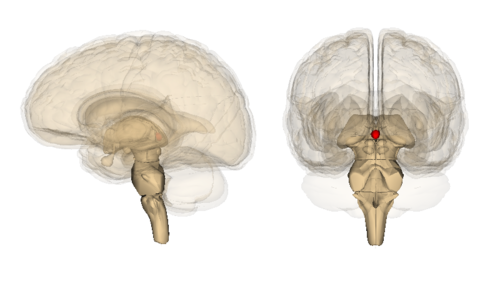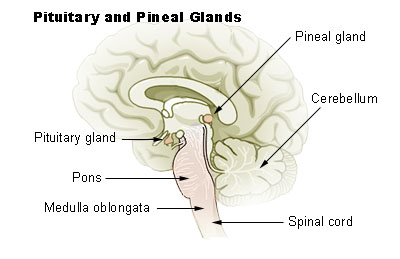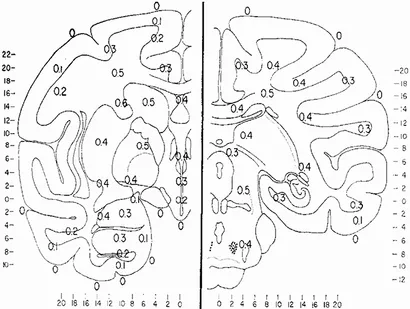The pineal gland (also known as the pineal body or epiphysis cerebri) is a small endocrine gland in the brain of most vertebrates. In the darkness the pineal gland produces melatonin, a serotonin-derived hormone, which modulates sleep patterns following the diurnal cycles. The shape of the gland resembles a pine cone, which gives it its name. The pineal gland is located in the epithalamus, near the center of the brain, between the two hemispheres, tucked in a groove where the two halves of the thalamus join. It is one of the neuroendocrine secretory circumventricular organs in which capillaries are mostly permeable to solutes in the blood.



Brain temperature
sleep+oscillations+brain+temperature
regional+brain+temperature+differences

from Brain temperature and its fundamental properties: a review for clinical neuroscientists, 2015
Pineal gland: A structural and functional enigma, 2014
Histamine
histamine and pineal gland function
Histamine in the central nervous system: its role in circadian rhythmicity, 1994
- Histamine is an accepted neurotransmitter and/or neuromodulator in the central nervous system (CNS). Its neuronal system in the brain is well organized, with cell bodies localized in a small area of the posterior hypothalamus. Diverse biological actions of histamine are mediated via three classes of receptors termed H1, H2, and H3. The existence of other histamine receptor subtypes is likely in invertebrates or in birds. This article surveys basic data indicative of a neuroregulator role of histamine in the CNS; it also presents accumulating evidence suggesting that histamine may be related to circadian rhythmicity in the body.
Physiology of the Pineal Gland and Melatonin introduction
Physiology of the Pineal Gland and Melatonin